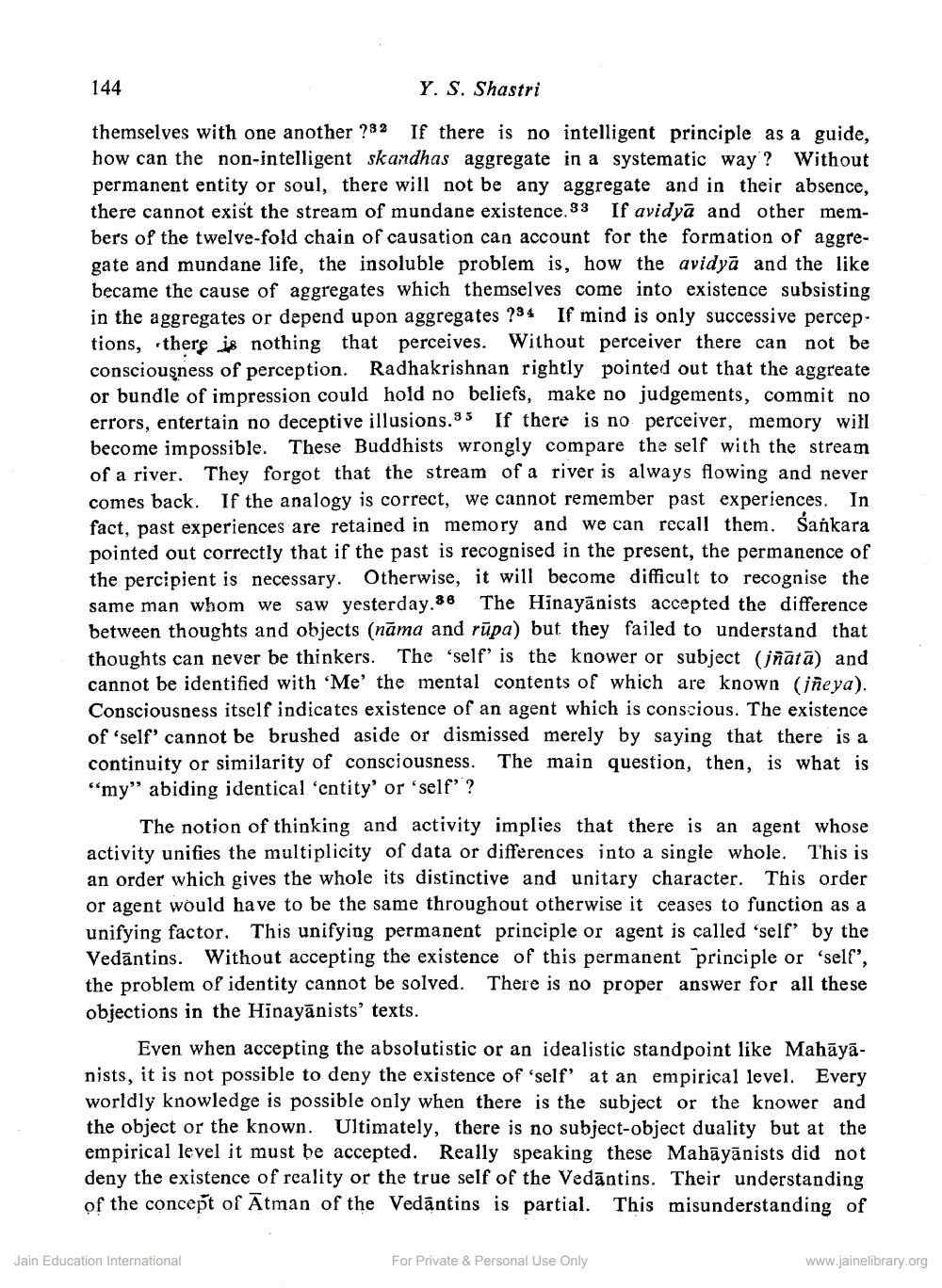Book Title: Reconcliation of Buddhist and Vedantic Notion of Self Author(s): Yajneshwar S Shastri Publisher: Z_Aspect_of_Jainology_Part_3_Pundit_Dalsukh_Malvaniya_012017.pdf View full book textPage 5
________________ 144 Y. S. Shastri themselves with one another ?82 If there is no intelligent principle as a guide, how can the non-intelligent skandhas aggregate in a systematic way? Without permanent entity or soul, there will not be any aggregate and in their absence, there cannot exist the stream of mundane existence. 33 If avidyā and other members of the twelve-fold chain of causation can account for the formation of aggregate and mundane life, the insoluble problem is, how the avidyā and the like became the cause of aggregates which themselves come into existence subsisting in the aggregates or depend upon aggregates ?34 If mind is only successive percep. tions, there is nothing that perceives. Without perceiver there can not be consciousness of perception. Radhakrishnan rightly pointed out that the aggreate or bundle of impression could hold no beliefs, make no judgements, commit no errors, entertain no deceptive illusions.95 If there is no perceiver, memory will become impossible. These Buddhists wrongly compare the self with the stream of a river. They forgot that the stream of a river is always flowing and never comes back. If the analogy is correct, we cannot remember past experiences. In fact, past experiences are retained in memory and we can recall them. Sankara pointed out correctly that if the past is recognised in the present, the permanence of the percipient is necessary. Otherwise, it will become difficult to recognise the same man whom we saw yesterday.86 The Hinayānists accepted the difference between thoughts and objects (nāma and rūpa) but they failed to understand that thoughts can never be thinkers. The 'self' is the knower or subject (inātā) and cannot be identified with ‘Me' the mental contents of which are known (jñeya). Consciousness itself indicates existence of an agent which is conscious. The existence of 'self' cannot be brushed aside or dismissed merely by saying that there is a continuity or similarity of consciousness. The main question, then, is what is "my" abiding identical 'entity' or 'self'? The notion of thinking and activity implies that there is an agent whose activity unifies the multiplicity of data or differences into a single whole. This is an order which gives the whole its distinctive and unitary character. This order or agent would have to be the same throughout otherwise it ceases to function as a unifying factor. This unifying permanent principle or agent is called ‘self by the Vedāntins. Without accepting the existence of this permanent principle or 'self', the problem of identity cannot be solved. There is no proper answer for all these objections in the Hinayānists' texts. Even when accepting the absolutistic or an idealistic standpoint like Mahāyānists, it is not possible to deny the existence of 'self' at an empirical level. Every worldly knowledge is possible only when there is the subject or the knower and the object or the known. Ultimately, there is no subject-object duality but at the empirical level it must be accepted. Really speaking these Mahāyānists did not deny the existence of reality or the true self of the Vedāntins. Their understanding of the concept of Ātman of the Vedāntins is partial. This misunderstanding of Jain Education International For Private & Personal Use Only www.jainelibrary.orgPage Navigation
1 ... 3 4 5 6 7 8 9 10 11 12 13 14
